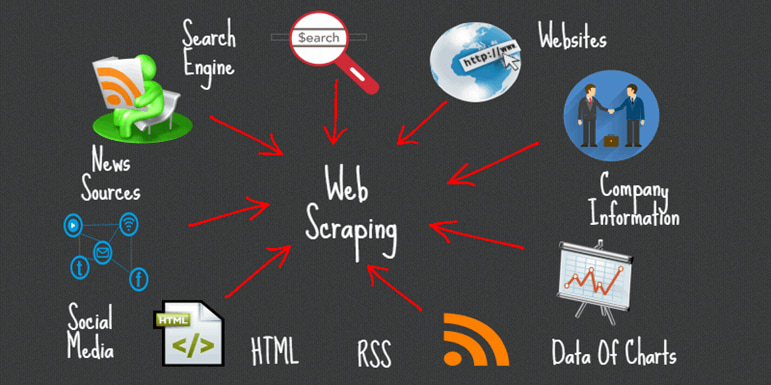In this segment you are going to learn how make a python command line program to scrape a website for all its links and save those links to a text file for later processing. This program will cover many topics from making HTTP requests, Parsing HTML, using command line arguments and file input and output. First off I’m using Python version 3.6.2 and the BeautifulSoup HTML parsing library and the Requests HTTP library, if you don’t have either then type the following command to have them installed on your environment. So let’s get started.
- Python Web Scraping With Requests And Beautiful Soup Answers
- Python Web Scraping With Requests And Beautiful Soup Pdf
- Web Scraping With Python Beautifulsoup
Now let’s begin writing our script. First let’s import all the modules we will need:
Line 1 is the path to my virtual environment’s python interpreter. On line 2 we are import the sys module so we can access system specific parameters like command line arguments that are passed to the script. Line 3 we import the Requests library for making HTTP requests, and the BeautifulSoup library for parsing HTML. Now let’s move on to code.
- Check out the tutorial on how to scrape dynamic web pages with Python. Learn how to extract data with Selenium, headless browsers, and the web scraping API.
- Dec 25, 2018 web scraping with python, requests, and beautifulsoup is open source. Web scraping with python, requests, and beautifulsoup is automated. By now, you should have all the necessary steps to generate.
Here we will check sys.argv, which is a list that contains the arguments passed to the program. The first element in the argv list(argv[0]) is the name of the program, and anything after is an argument. The program requires a url(argv[1]) and filename(argv[2]). If the arguments are not satisfied then the script will display a usage statement. Now let’s move inside the if block and begin coding the script:
On lines 2-3 we are simply storing the command line arguments in the url and file_name variables for readability. Let’s move on to making the HTTP request.

The Requests library allows you to make use of HTTP within your Python programs in a human readable way, and the Beautiful Soup module is designed to get web scraping done quickly. We will import both Requests and Beautiful Soup with the import statement.
On line 5, we are printing a message to the user so the user knows the program is working.
On line 6 we using the Requests library to make an HTTP get request using requests.get(url) and storing it in the response variable.


On line 7 we are calling the .raise_for_status() method which will return an HTTPError if the HTTP request returned an unsuccessful status code.
On line 1 we are calling bs4.BeautifulSoup() and storing it in the soup variable. The first argument is the response text which we get using response.text on our response object. The second argument is the html.parser which tells BeautifulSoup we are parsing HTML.

On line 2 we are calling the soup object’s .find_all() method on the soup object to find all the HTML a tags and storing them in the links list.
On line 1 we are opening a file in binary mode for writing(‘wb’) and storing it in the file variable.
On line 2 we are simply providing the user feedback by printing a message.

On line 3 we iterate through the links list which contains the links we grabbed using soup.findall(‘a’) and storing each link object in the link variable.
On line 4 we are getting the a tag’s href attribute by using .get() method on the link object and storing it in the href variable and appending a newline(n) so each link is on its own line.
On line 5 we are printing the link to the file. Notice that were calling .encode() on the href variable, remember opened the file for writing in binary mode and therefore we must encode the string as a bytes-like object otherwise you will get a TypeError.
On line 6 we are closing the file with the .close() method and printing a message on line 7 to the user letting them know the processing is done. Now let’s look at the completed program and run it.
Python Web Scraping With Requests And Beautiful Soup Answers
Now all you
have to do is type this into the command line:
Output:
Now all you have to do is open up the links file in an editor to verify they were indeed written.
Python Web Scraping With Requests And Beautiful Soup Pdf
And that’s all there is to it. You have now successfully written a web scraper that saves links to a file on your computer. You can take this concept and easily expand it for all sorts of web data processing.
Web Scraping With Python Beautifulsoup
Further reading: Requests, BeautifulSoup, File I/O
